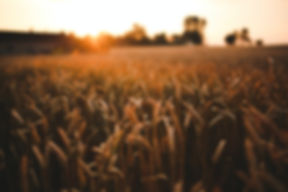

Our Mission
Our mission for BW Goats is twofold. First, we strive to provide high quality livestock for 4-H and FFA exhibitors to show or begin their own breeding program. Secondly, we make it a rule to only partake in responsible farming in order to protect the environment. To learn more about our responsible farming techniques and products, please get in touch.
Why Goats?
From meat to milk, soap to fiber goats do just about everything. These little lawn mowers cover all their bases with how versatile they are.
-
Raise your own meat. Did you know that chevon (goat meat) is the most widely consumed meat in the world? It is also extremely healthy when compared to other common meats that are traditionally eaten in the U.S.
-
Produce milk. Dairy goats give copious amounts of milk, usually more than a family can use. You can make goat cheese, goat yogurt, and whatever other dairy products you can dream up (goat kefir?). If you are a small farmer, goats can help you achieve a goal of producing value-added products like cheese, and yogurt—or just sell fresh goat milk. There is a good market for it with folks who can't tolerate cow dairy.
-
Produce soap. Goat milk makes a wonderful, soft and mild soap that is often used by people with sensitive skin.
-
Produce fiber. Angora and Pygora goats yield mohair, while cashmere goats produce cashmere. You can take raw goat fiber and spin it into yarn and knit, weave, or crochet it into any number of value-added products.
-
Use their skin and hide. Goat skins can be dried and tanned like leather and used in any number of products, including goatskin gloves. Goat hides (with hair still intact) are traditionally used in Africa to make drum heads. Goatskin rugs can also be made.
Goats provide an all-natural, highly-effective way to clear any land of overgrown brush and invasive plants without harming the environment.
Goats conveniently love to eat the things people don't want around their property, no matter how difficult it can be to get to it. They eat yellow star thistle, poison oak, blackberry bushes, and other difficult types of brush, vines, and briars. They climb high and low to eat everything they can find, leaving behind a pristine, low-level of vegetation.
On the other end of things, the manure goats leave behind is odorless and provides the soil with rich nutrients without reseeding the plants they digest. (It's more nitrogen-rich than manure from cows or horses!)
Most importantly: there are no chemicals involved. You don't need to worry about your family, animals, or neighbors walking through areas that have been treated with toxic chemicals. There's no risk of damaging your soil or nearby groundwater. Anything left behind by the goats is 100% organic material.
Old traditional ways of clearing brush include brush cutting, bulldozing, and burning. But each of these solutions leaves much to be desired.
-
Brush cutting requires gasoline/petroleum-powered equipment such as chainsaws, weed whackers, etc. Gas lawn mowers alone are responsible for 5% of total carbon dioxide emissions in the US, according to the EPA. Eco-friendly farmers and landowners want better alternatives.
-
Bulldozers/tractors are invasive to the local habitat and wreak havoc on animals and insects that play a vital role in the ecosystem. Plus, they can't clear land that has steep or rugged terrain.
-
Controlled burns in Northern California are extremely high-risk. Given the increasing frequency of lethal wildfires in our area, it's becoming unsafe as an option.
Goats are emissions-free, friendly to local animals, able to clear any kind of land, and safe for you, your land, and your neighbors.




